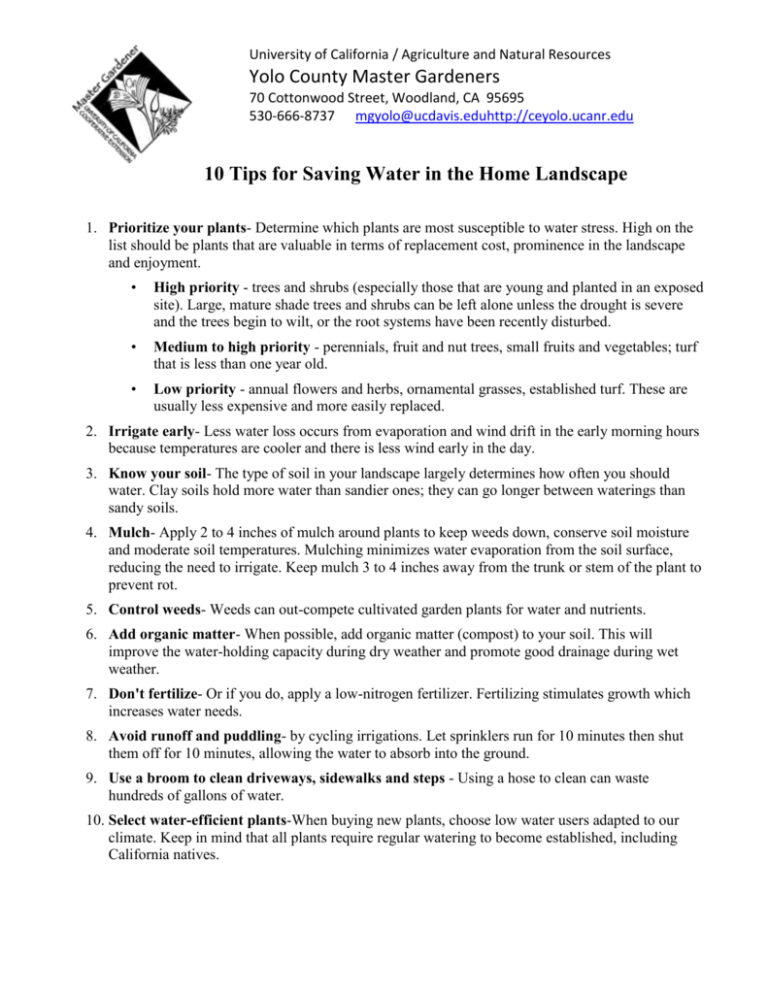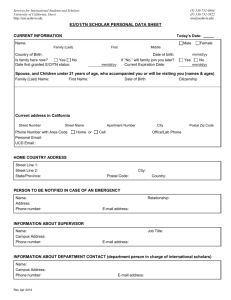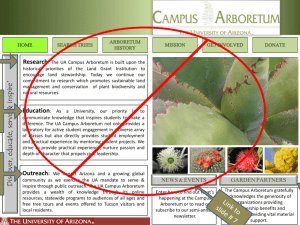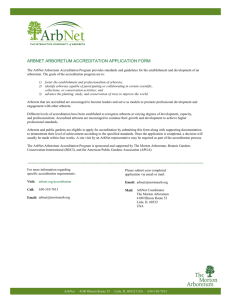
University of California / Agriculture and Natural Resources
Yolo County Master Gardeners
70 Cottonwood Street, Woodland, CA 95695
530-666-8737 mgyolo@ucdavis.eduhttp://ceyolo.ucanr.edu
10 Tips for Saving Water in the Home Landscape
1. Prioritize your plants- Determine which plants are most susceptible to water stress. High on the
list should be plants that are valuable in terms of replacement cost, prominence in the landscape
and enjoyment.
•
High priority - trees and shrubs (especially those that are young and planted in an exposed
site). Large, mature shade trees and shrubs can be left alone unless the drought is severe
and the trees begin to wilt, or the root systems have been recently disturbed.
•
Medium to high priority - perennials, fruit and nut trees, small fruits and vegetables; turf
that is less than one year old.
•
Low priority - annual flowers and herbs, ornamental grasses, established turf. These are
usually less expensive and more easily replaced.
2. Irrigate early- Less water loss occurs from evaporation and wind drift in the early morning hours
because temperatures are cooler and there is less wind early in the day.
3. Know your soil- The type of soil in your landscape largely determines how often you should
water. Clay soils hold more water than sandier ones; they can go longer between waterings than
sandy soils.
4. Mulch- Apply 2 to 4 inches of mulch around plants to keep weeds down, conserve soil moisture
and moderate soil temperatures. Mulching minimizes water evaporation from the soil surface,
reducing the need to irrigate. Keep mulch 3 to 4 inches away from the trunk or stem of the plant to
prevent rot.
5. Control weeds- Weeds can out-compete cultivated garden plants for water and nutrients.
6. Add organic matter- When possible, add organic matter (compost) to your soil. This will
improve the water-holding capacity during dry weather and promote good drainage during wet
weather.
7. Don't fertilize- Or if you do, apply a low-nitrogen fertilizer. Fertilizing stimulates growth which
increases water needs.
8. Avoid runoff and puddling- by cycling irrigations. Let sprinklers run for 10 minutes then shut
them off for 10 minutes, allowing the water to absorb into the ground.
9. Use a broom to clean driveways, sidewalks and steps - Using a hose to clean can waste
hundreds of gallons of water.
10. Select water-efficient plants-When buying new plants, choose low water users adapted to our
climate. Keep in mind that all plants require regular watering to become established, including
California natives.
References:
http://ucanr.edu/sites/YCMG/files/184804.pdf
Landscapes
Water Conservation Tips for the Home Lawn and Garden is a UC ANR publication that describes how to
reduce water use and at the same time have a lovely and enjoyable garden. (PDF
93kb)http://anrcatalog.ucdavis.edu/pdf/8036.pdf
Water-Smart Landscapes from the US EPA describes how to have a beautiful, healthy yard while using
less water. (PDF)http://www.epa.gov/WaterSense/docs/water-efficient_landscaping_508.pdf
Water Efficient Plants
The Arboretum All-Stars are 100 easy to grow, water-efficient plants selected by the UC Davis
Arboretum horticultural staff and tested in our region.
http://www.arboretum.ucdavis.edu/arboretum_all_stars.aspx
Vegetable Gardening
Suggestions for home vegetable garden management during a drought include valuable
information on critical watering periods for numerous vegetable crops. (PDF 20kb)
http://ucanr.edu/sites/sacmg/files/183393.pdf
Fruit Trees
This document describes the best ways to care for fruit trees in a drought, with valuable tips on when and
how to water and thin fruit (PDF 95kb )http://ucanr.edu/sites/sacmg/files/183723.pdf
Lawns
Managing Turf Grasses During Drought is a comprehensive and detailed UC publication that
addresses situations such as the ones we are currently facing. (PDF 421kb)
http://ucanr.edu/sites/sacmg/files/182387.pdf
Lawn Watering Quick Tiphttp://www.ipm.ucdavis.edu/QT/lawnwateringcard.html
Helpful websites
UC Guide to Healthy Lawns provides extensive information about growing a healthy lawn. From
UC IPM Online, the UC Statewide Integrated Pest Management Program.
http://www.ipm.ucdavis.edu/TOOLS/TURF/index.html
The Sacramento Tree Foundation offers excellent in-depth tree planting and watering guidance
for our area. http://www.sactree.com/pages/1
River-Friendly Landscaping is an environmentally friendly way of gardening. RFL practices
conserve water, reduce yard waste, and prevent pollution of air and local rivers. Use the River Friendly
benefits calculator to see how much water, time and money can be saved by creating a river-friendly
landscape. http://www.msa.saccounty.net/sactostormwater/RFL/default.asp.
Reviewed by Judy McClure, UC Master Gardener Program Coordinator.
All contents copyright © 2014 The Regents of the University of California All rights reserved
"It is the policy of the University of California (UC) and the UC Division of Agriculture & Natural Resources not to engage in discrimination against or
harassment of any person in any of its programs or activities (Complete nondiscrimination policy statement can be found at
http://ucanr.edu/sites/anrstaff/files/169224.pdf ) Inquiries regarding ANR’s nondiscrimination policies may be directed to Linda Marie Manton,
Affirmative Action Contact, University of California, Davis, Agriculture and Natural Resources, One Shields Avenue, Davis, CA 95616, (530) 752-0495."










